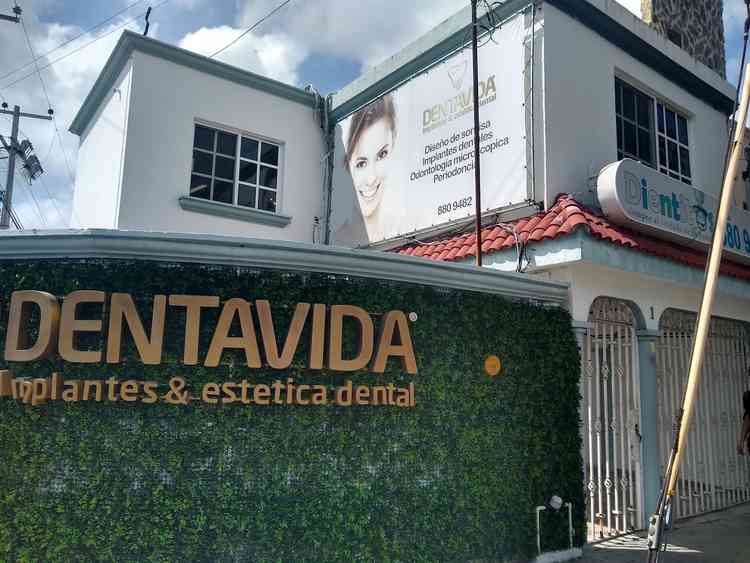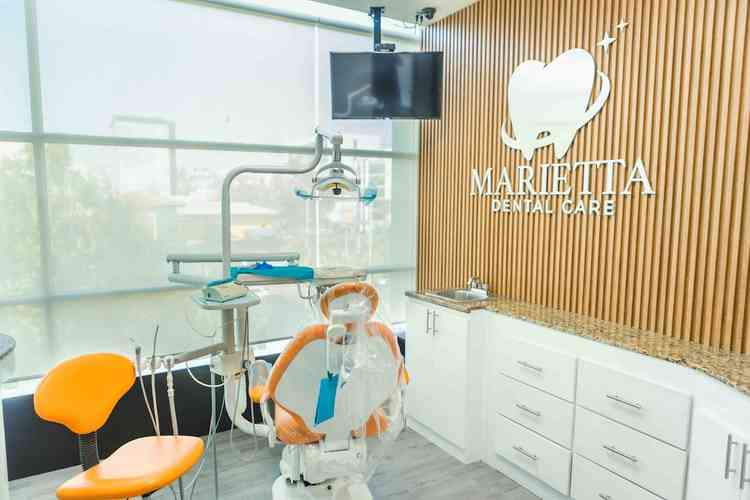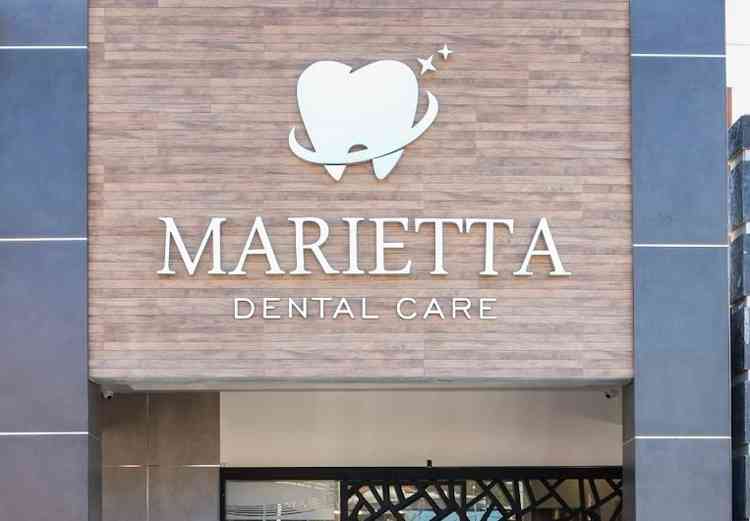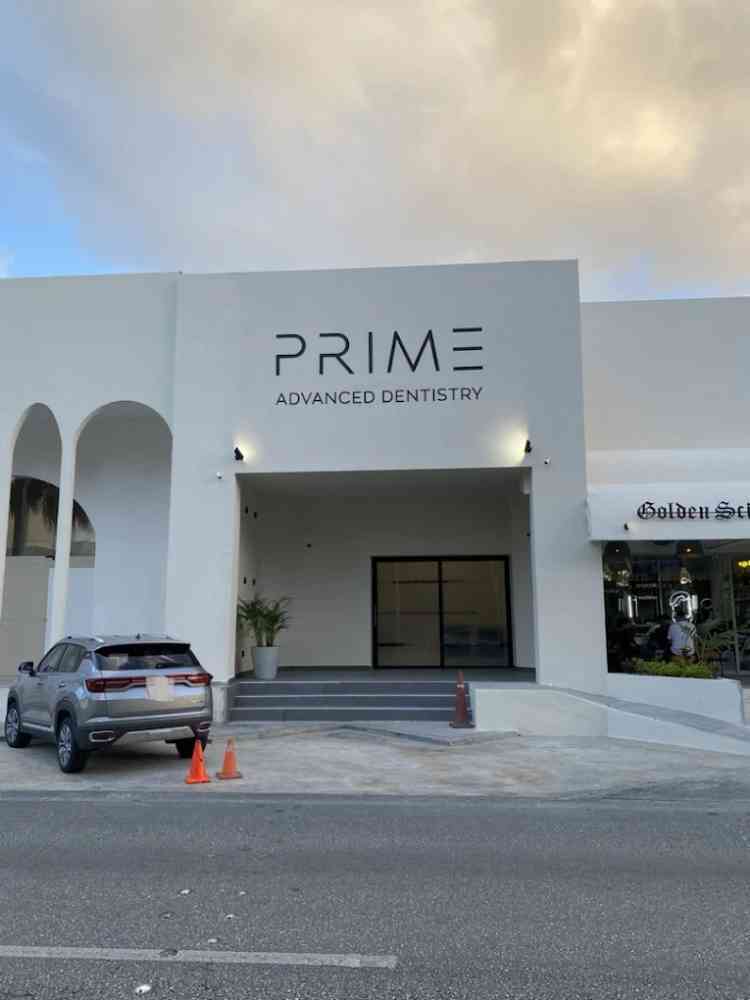Screwless Dental Implants: Could This Be the Better Option for You?

Prathyusha Itikarlapalli
- Content Writer

Gustavo Moreno Vargas
- Reviewed by

Table of contents
- Understanding Screwless Dental Implants
- How Screwless Dental Implants Function?
- Limitations of Traditional Screw-Retained Implants
- Advantages of Dental Implants Without Screws
- Who Is a Good Candidate for Screwless Implants?
- Step-by-Step Screwless Dental Implant Procedure
- Cost Considerations: Are Screwless Implants Cheaper?
- Potential Risks and Complications
- How Often Do Screwless Dental Implants Fail?
- Can Screwless Implants Be Removed?
- Replacing Dental Implants With Dentures
- Choosing the Right Dental Implant
Key Takeaways
- Dental implants without screws hold the crowns using a cementing material. Unlike conventional implants, they lack a screw hole and improve the aesthetics of the front teeth.
- Screwless dental implants for seniors offer enhanced comfort by easing daily activities such as chewing and speaking. These behave like natural tooth roots, preserve jawbone, and prevent sunken cheeks.
- Inadequate jawbone and diabetes make some candidates unsuitable, while the dental cement used to fix a crown on screwless dental implants can cause inflammation and gum irritation in others.
What Are Screwless Dental Implants?
Typically, tooth implants are the metal screw like devices fixed within the jaw. The screwless dental implants, also known as bonding dental implants, are an advanced alternative to traditional screw-retained dental implants. These come with three parts: the implant, abutment, and crown. While the implants lie buried within the jaw, the abutment comes at the interface of the jaw and teeth. Finally, the artificial teeth (either the crowns or dentures) lie on top, filling the gap left by fallen teeth. The abutment is fixed over the implant using dental cement, avoiding the screw system that the traditional implant relies on. For this reason, people also call them cement-retained dental implants.
While traditional dental implants come with screws to hold the crowns, this poses a few cons. Over time, the screw gets tightened or loosened, posing problems. The screwless dental implants, on the other hand, avoid these problems and offer a precise fit by avoiding the screw setup.
How Do Screwless Dental Implants Work?
The dental implants without screws function similarly to regular implants. But the way they hold the dental crown is different. In traditional implants, a screw connects the crown to the implant, or the screw dentures, where dentures are held over implants using screws. In screwless implants, the crown is attached using a dental cement. This creates a special locking or friction system instead of a screw, giving a secure and natural-looking result. The implants osseointegrate with the surrounding jawbone, forming a strong bond that lasts for a lifetime. However, the way the crown and abutment connect in screwless implants needs careful placement and skill to keep them stable and avoid future problems.
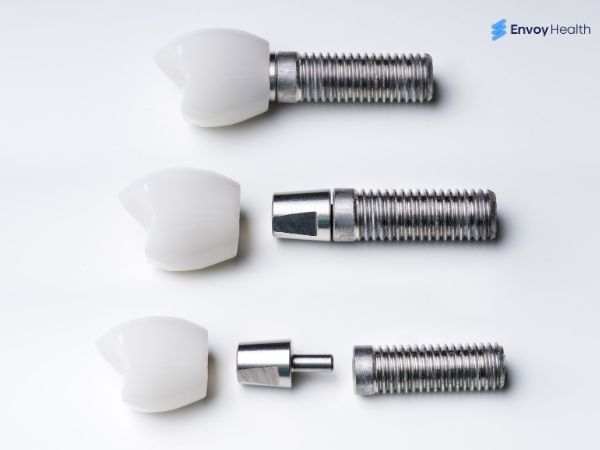
Drawbacks of Conventional Screw-Retained Dental Implants
Scew implants are the conventional form of implants that hold the crown using screws. These last longer, offering durable strength and last for a lifetime. While the costs are quite higher, these implants require a longer healing period. Plus, the invasive procedure involves multiple steps. The surgical placement of implants, which involves drilling, should be followed by the minimally invasive abutment placement. The dentist cut the gum tissue to reopen the implant site, reach the implant screws, and fix the abutment. This involves an extended healing period. Furthermore, this method slightly compromises the front teeth's appearance. The small screw hole on the crown into which the screw is inserted to hold it in place. For front teeth, it can sometimes be visible, particularly when the angulation is not right. While it can be covered with dental material, this action can still compromise the tooth color, light reflection, and symmetry.
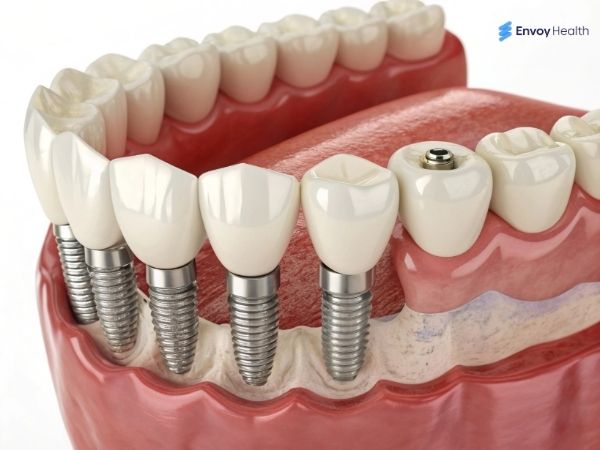
Benefits of Dental Implants Without Screws
The screwless dental implants do not rely on the screw-type setup. Dentists fix them using dental cement, and this does not require a hole on the top of the crown to screw it. Since the crown is bonded directly, the whole concept of a visible hole does not exist. So you don’t have to worry about aesthetics. Plus, the procedure is simple, and it eliminates the need for invasive abutment fixation. Instead, dentists fix the abutment and crown directly using bonding material. This also shortens the healing time, making it a quicker, single-step process.
Who Can Get Screwless Dental Implants?
Candidates suffering from single or multiple tooth loss, and those looking for a more aesthetic, simpler, yet durable solution, can get screwless dental implants. Having sound oral and overall health, with a healthy and adequate jawbone, makes you a suitable candidate. Note that lacking enough jawbone and suffering from medical conditions such as diabetes or autoimmune bone problems will make you unsuitable for the procedures. These conditions prolong the healing and increase the risk of complications, so dentists suggest alternative procedures.[1]
Screwless Dental Implants Procedure
The screwless dental implant procedure looks similar to the conventional dental implant procedure, but eliminates a few steps, making it simple and convincing. Here, we detail the steps clearly for a better understanding.
Step 1: Consultation and Assessment
Your initial step for getting dental implants without screws begins with an initial consultation. The dentists will evaluate your oral and medical health. They will carry out diagnostic digital and panoramic X-rays and advanced imaging techniques such as CBCT. This will help them understand your jawbone condition and help them plan the implant positioning for better results. This process not only ensures more precise and lasting results but also helps identify and prevent potential risks or complications. In addition, your dentist will also brief you on the procedure and decide the number of implants you will need. Don’t forget to ask for a detailed price estimate and discuss the details of your insurance policy (if applicable).
Step 2: Dental Implant Surgery
On the day of your implant surgery, the dentist will surgically fix the dental implants in spaces left by missing teeth. This is similar to the traditional dental implant surgery. Dentists make small incisions within the gum tissue. This will help them reach the jawbone to drill holes and fix the implants. They will collect the tooth impressions, close the incisions using sutures, and cover the implants using temporary crowns. You will return home, and the surgical site will heal in a few months.
Step 3: Abutment Fixation and Crown Positioning
The incisions heal, and the implants form a strong bond with the surrounding jawbone during the healing period. Dentists fix the abutment and crown using dental cement. The crowns are specially designed to friction-fit over the abutment. So they don’t need a screw mechanism to be held over the implant.
Is the Surgical Procedure Painful?
The procedure for getting tooth implants can be painful, so dentists carry it out under anesthesia. They will numb your gums so that you don't feel the pain when they make incisions and drill holes into the gums. After the procedure, you will experience discomfort, soreness, and pain as the anesthesia wears off. However, with time, the incision wounds heal, and having screw in gums won't cause pain or interfere with your daily activities. The implants form a strong bond with the surrounding jawbone and behave like natural tooth roots. So you don’t feel any pain after complete healing.
Are Screwless Dental Implants Cheaper?
Screwless dental implants are not much cheaper than screw-retained dental implants. The costs generally fall within the same price range. The main difference relates to the method of implant attachment, while the major parts of the implant system remain the same.
How Much Does Screwless Dental Implants Cost?
In the United States, screwless dental implants cost between $3,000 and $7,000 per tooth. This cost for the cement-retained implants includes an implant with an abutment and a crown. On the other hand, the traditional screw-retained dental implants cost ranges between $3,000 and $5,000 per tooth. However, when discussing the broader price range, the cost of screwless dental implants varies depending on the choice of clinic and surgeon, the technology used, and the need for additional procedures such as bone grafts and sinus lifts.
Know the Potential Risks of Screwless Dental Implants
Every choice in healthcare has its pros and cons. Understanding them in detail will help you assess their worth in your specific case. Below are the risks and problems associated with getting screwless dental implants.[2]
- Difficulty with removal and repair when required: Since the crowns are fixed using dental cement, removing them is more complex compared to the simpler unscrewing methods used for screw-retained dental implants.
- Strict candidature and risk of failure: Dental implants offer long-term results only for suitable candidates. Lacking enough jawbone or suffering from uncontrolled blood sugar levels can prolong the healing and increase the risk of infections.
- Dental cement-related issues: The dental cement used to bond the crown to the implants can cause gum irritation and inflammation in some candidates. This is more common when the crown fixation is not done properly and excess cement is left beneath the gum line. Peri-implantitis is a common outcome caused by these conditions.
- Absence of long-term data on the success rate: As a newer technique, screwless dental implants lack extensive long-term studies on their success and durability, making it important to clearly discuss with your dentist. Discussing expectations, maintenance, and follow-up care with your dentist is especially important for long-term success. You should rely on screwless dental implants reviews from patients who obtained them from the specific doctor with whom you are considering treatment.
How Often Do Dental Implants Fail When You Get Them Without Screws?
Dental implants without screws are a successful procedure. The screw being cemented on the implant eliminates the risks associated with screw-related implants, such as loosening, tightening, and infection. Further, these implants come as a single, solid piece and do not pose risks of cracks or failure due to excess bite force.
However, the risk of failure increases when you lack jawbone, are suffering from uncontrolled blood sugar levels, or have autoimmune bone conditions. Further, habits like smoking tobacco delay healing and negatively impact the osseointegration, increasing the risk of implant failure.
Are Dental Implants Removable When You Get Them Without Screws?
Screwless dental implants are anchored in the jaw just like traditional implants. While the crowns are secured with dental cement, they cannot be removed on your own and require a dentist’s intervention for any adjustments or repairs. However, an important point to consider is that screwless implants are more difficult to remove than conventional implants.
Can Dental Implants Be Removed and Replaced With Dentures?
Dental implants are designed to last for years and rarely require removal. Certain conditions, such as infection, peri-implantitis, or failure due to ineffective osseointegration, necessitate implant removal. Note that implants should be removed only by a qualified, certified, and experienced dental professional.
Dentists examine the implant area and make incisions to reach the jawbone. They separate out the implants from the surrounding bone tissue, close the incisions, and allow the area to heal. Once the gums have healed completely, you can wear the custom-fit dentures. These are the removable full-arch prosthesis made from acrylic or porcelain. Dentures help you restore the ability to chew and speak clearly, but choosing them as a long-term solution can lead to jawbone loss.
Which Dental Implants Are the Best?
Deciding between screwless and screw-retained dental implants is not always straightforward. The best choice depends on several factors, including the location of the tooth, the condition of your jawbone and gums, your aesthetic expectations, budget, and the expertise of your dentist and clinic. Additionally, the technology and techniques available at the clinic can influence which type of implant will provide the most reliable and natural-looking results. Consulting with a qualified dentist is the key to determining the right option for your specific needs.
Final Word!
Screwless dental implants offer a modern, aesthetic, and reliable solution for replacing missing teeth, especially in areas where appearance is critical. They provide a natural-looking smile, simplify the procedure, and reduce some of the challenges associated with traditional screw-retained implants. However, like any dental treatment, careful candidate evaluation, expert placement, and proper aftercare are essential to ensure long-term success. By learning what to expect, along with the advantages and risks, patients can confidently choose screwless dental implants for a durable smile.
Take the next step toward a confident smile. Sign up with Envoy Health today to connect with trusted clinics and expert dental care, knowing you’re in safe, professional hands.
References
Disclaimer
The information in this article is for educational purposes only and does not replace medical advice. Always consult your doctor before starting any treatments.
Of course, screwless dental implants are good because they offer a natural look and better aesthetics. These don’t require the intrinsic steps like the traditional dental implants and offer a simpler recovery. However, you should choose an experienced dentist because leaving excess cementing material beneath the crown can cause unnecessary complications, such as peri-implantitis.
Dentists use dental cement to hold the crown over the implant for the screwless dental implant to function. The precise friction fit holds the crown in place, withstanding the natural bite force. This is in contrast to traditional implants, which come with a screw hole, and dentists use a screw to secure them tightly. The structure and function of screwless dental implants are similar to those of screw-retained dental implants, but both vary in the way the crown is fixed.
The screwless dental implants are fitted into the jawbone using the same mechanism as the conventional dental implant. Dentists cut open the gums and drill a hole in the jawbone to fix the implants. They close the incisions using sutures. Later, after the gums heal, they fix the crown over the implant using dental cement.
Dental crowns, bridges, and partial and complete dentures are the most opted dental implant alternatives. While dental implants require oral surgery, these alternative options are minimally invasive and offer similar functions. However, you should choose the appropriate one based on your oral condition and the extent of tooth loss.
Dental implants are considered oral surgery, as they require surgical incisions to cut open the gums. This step is essential because dentists need to access the interior jawbone, where they drill a hole to fix the implants. Don’t worry about the invasiveness or pain, as the procedure will be carried out under anesthesia, and dentists use advanced technology for ensured precision and accuracy.
So, we partner with the premier healthcare facilities!
Send me the list
